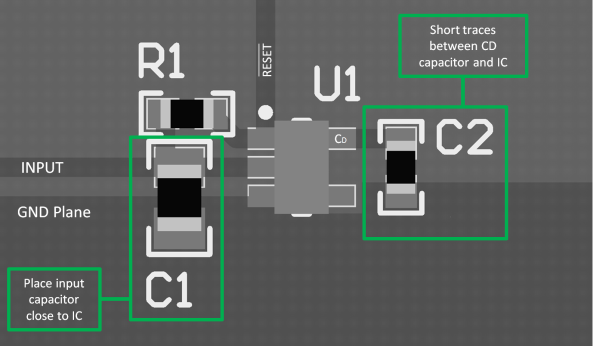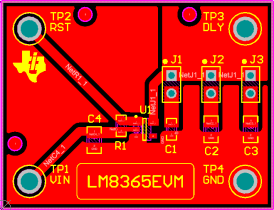SNVS233C March 2003 – December 2015 LM8365
PRODUCTION DATA.
10 Layout
10.1 Layout Guidelines
- Place the input capacitor as close as possible to the IC.
- Keep traces short between the IC and the CD capacitor to ensure the timing delay is as accurate as possible.

